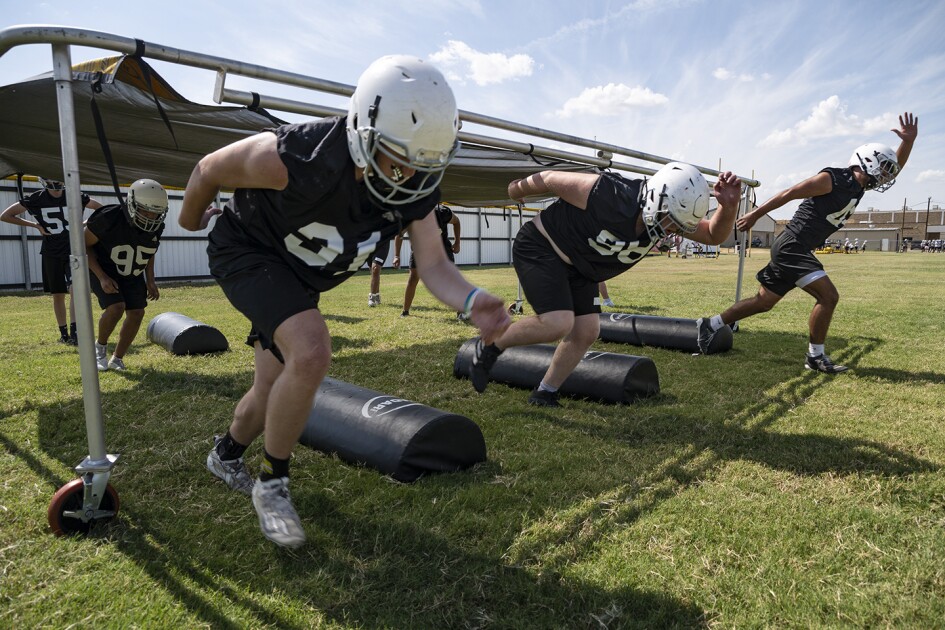A group of high-powered policymakers and educators gathered here last week to build support for a new vision of educational assessment that is less a snapshot of students’ one-time performance and more like good instruction itself.
Led by Stanford University professor Linda Darling-Hammond, a panel of experts outlined a comprehensive system that includes summative and formative tests of higher-order thinking skills, reflecting a marketplace that they say places increasing value on such skills.
They urged a move away from pages and pages of multiple-choice tests that demand factual recall, and toward the development of a set of deeper, more analytical questions, tasks, and projects that ask students to solve and discuss complex problems. One example is a problem that has been posed to Connecticut high school students: Figure out how to build a statue that could withstand the effects of acid rain, then describe, analyze, and discuss your findings.
Such assessments, Ms. Darling-Hammond said, can be “of, for, and as learning.” They can “embody” content standards, she said, not just approximate them. Because teachers would help create and score the assessments, and the assessments would be pegged to good-quality content standards, an aligned teaching-and-learning system would take shape that would help teachers adjust instruction in real time and help district and state administrators plot longer-term education strategy, the experts said.
Common Standards
The portrait of assessment, fleshed out in a paper by Ms. Darling-Hammond that draws on assessment practices in the United States and abroad, was presented at a discussion organized by two Washington-based groups, the National Governors Association and the Council of Chief State School Officers. They have enlisted the support of 48 states to devise common content standards designed to ensure college and career readiness.
The common standards are an “essential” but “inadequate” step toward improving education, said Gene Wilhoit, the CCSSO’s executive director, but they must be accompanied by improved assessment, new types of curriculum, and better teacher preparation and professional development.
Dane Linn, who oversees the common-standards work for the NGA, said a vital part of next-generation assessments is the role they must play in learning. “The assessments we end up with have to inform instruction,” he said. If they don’t change educators’ practice, he said, “then what good are they?”
Even though they are still in draft form, the common standards have garnered the support of President Barack Obama, who has offered a better shot at $4 billion in Race to the Top Fund economic-stimulus money to states that embrace them. Last week, the president proposed tying Title I education dollars to adoption of those or other standards validated as rigorous enough to ensure college readiness. (“Standards, Title I Link Scrutinized,” March 3, 2010.)
A special $350 million pot of Race to the Top Fund money is reserved for the development of common assessments. Six groups, or “consortia,” of states, proposing differing approaches to assessment, have formed to compete for that money. In a private meeting after last week’s panel discussion, leaders of those consortia met at the CCSSO’s office to discuss ways they might work together on summative assessments. (“States Rush to Join Testing Consortia,” Feb. 3, 2010.)
In one more potent public symbol of the administration’s support for common standards and assessments, the top education adviser in the White House, Roberto Rodriguez, appeared at the panel discussion and urged states to use the $350 million to build “transformative” assessment systems. As Congress begins reconsidering the reauthorization of the Elementary and Secondary Education Act, with the first hearing scheduled last week, Mr. Rodriguez said the administration views college and career readiness as a key objective in that legislation, but that aim requires revamped systems of assessment, professional development, and accountability.
Offering a glimpse of the White House’s priorities, he said that a good assessment system will measure individual student growth over time, include multiple measures of achievement, and provide summative information to inform both instruction and state and district policy. It will also integrate results into data systems to guide instruction and be well-integrated with curriculum and professional development.
Inseparable Pieces
Robert L. Linn, a widely respected authority on assessment who spoke on the panel, said that in designing new assessments, it is important to think of them as inseparable parts of systems that include the conception of standards and curriculum. If those are fused, he said, teachers can avoid the worst versions of “teaching to the test” because the tests are actually sound reflections of what the teachers know is important. “The test is bigger and closer to what you care about,” said Mr. Linn, a distinguished professor emeritus of education at the University of Colorado-Boulder.
Another member of the panel, Edward Roeber, an adjunct professor of education, measurement, and quantitative methods at Michigan State University’s college of education, said new assessments must be paired with revamped teacher preparation. Part of studying to become a teacher must be learning how to use formative assessment in the classroom to guide instruction, and few teachers now receive that training, he said.
Mr. Roeber also addressed a key area of interest among those monitoring the debate about new assessments: the price tag. His work on a soon-to-be-published study will show, he said, that if 30 states work together to design assessment systems that embody the qualities panelists were discussing, they could be crafted for about the same cost as what states spend now on tests used for the current version of the ESEA, the No Child Left Behind Act, a figure Ms. Darling-Hammond put at $1.4 billion per year.








